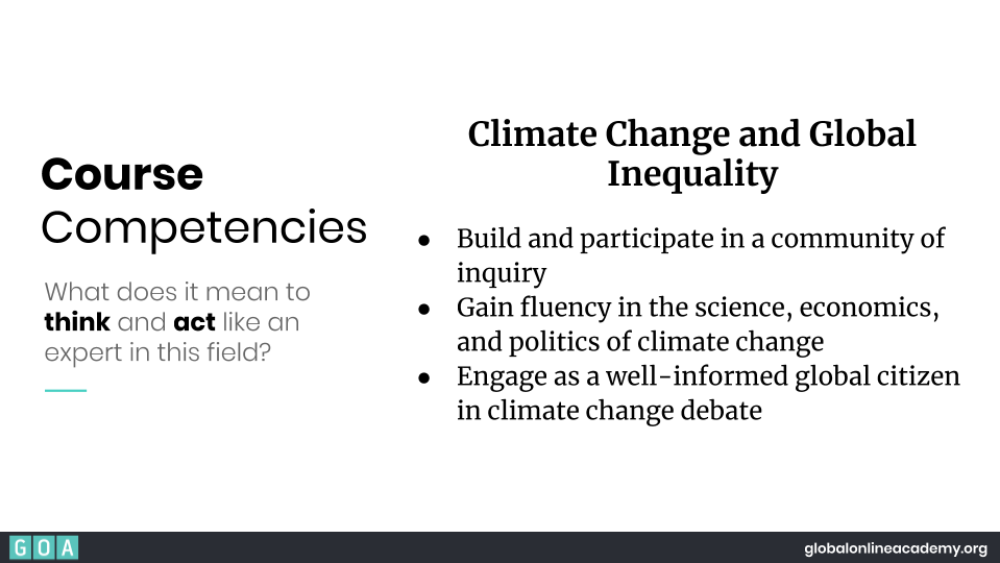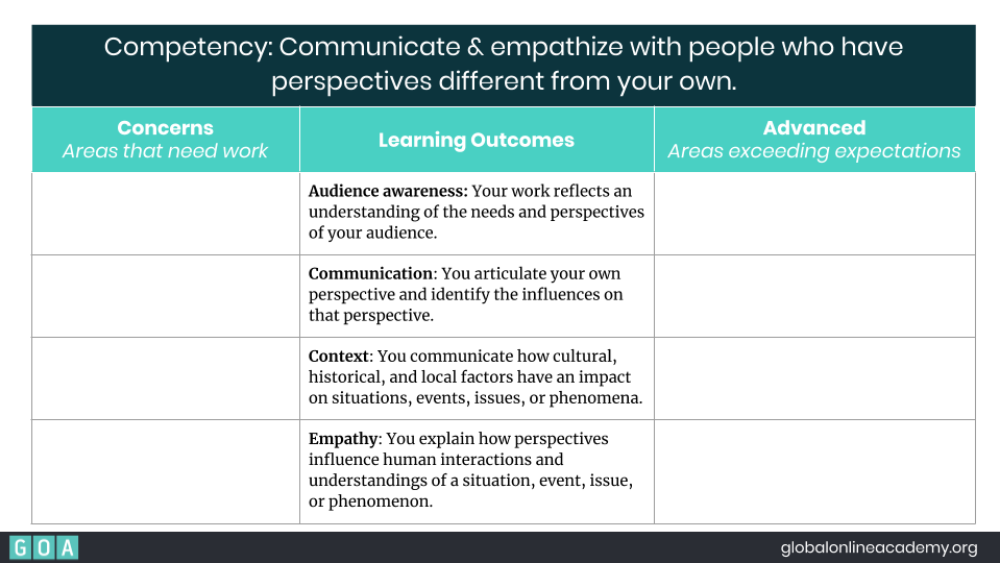Seven Building Blocks of a Competency-Based Classroom
The movement towards competency-based learning (CBL) is a movement towards a deeper focus on mastery and personalization in schools. CBL should be tailored to the needs of specific communities: ensuring that students authentically demonstrate relevant skills as evidence of learning can take many different forms. Yet, there are common elements across different types of schools and classrooms, especially in the design of learning experiences.
Ultimately, fully adopting CBL must be a schoolwide effort, but we have seen teachers lead CBL from their classrooms, piloting new ideas and strategies that offer new data and insights that can inspire their communities to make more systemic change. For teachers interested in getting started, we offer these seven building blocks for competency-based classrooms.
1. Competency-Based Learning Targets
CBL begins with a clear understanding of the skills students need to succeed in college, career, and life. While it’s true that full implementation of CBL entails all educators at a school working from the same competency architecture, individual teachers can take a skills-based approach by articulating and planning around the competencies developed in their own classrooms. At GOA, our teachers use our core competencies as models for articulating course-specific competencies, which help students set learning targets aligned to essential content. We start with the question, “What does it mean to think and act like an expert in this field?” By articulating targets in this way, teachers communicate that learning is relevant and must be demonstrated in an authentic, observable way. Below are examples from our student course Climate Change and Global Inequality. For a more detailed guide, see How to Write a Competency: Six Steps for Educators.

2. Exhibitions of Learning
Opportunities for students to showcase and defend their learning are fundamental to CBL experiences. These exhibitions, which are often delivered before an audience larger than the teacher or the class, can be used as summative celebrations of learning where students take responsibility for explaining how the work they’ve done is evidence of what they’ve learned. They can also be designed to develop ongoing practice with essential transdisciplinary competencies like communication, organization, and metacognitive reflection. The excellent book Leaders of Their Own Learning calls these “passage presentations.” See an example here.
3. Metacognitive Reflection
Students should be actively engaged in the “the process of thinking about thinking” in order to ensure they are well-positioned to transfer their learning. In competency-based classes, where students might be pursuing different learning pathways or producing varied, interesting work through projects, internships, or other experiences, the student’s self-assessment via metacognitive reflection is important evidence of learning. Reflection can take any number of forms, from exit tickets to narrative self-evaluations to student-led conferences to exhibitions of learning. In addition, CBL’s embrace of noncognitive competencies like self-awareness and resilience requires us to embed metacognitive reflection in learning experiences to ensure we are fairly and compassionately helping students develop those skills. For more information, see Noncognitive Competencies Are Important: How Should We Measure Them?
4. Portfolios
Student work is at the center of CBL, and portfolios serve not just as a showcase of student work, but as a living compendium of evidence-based growth. Especially in a CBL environment, portfolios are a chance for students to become the lead curators of their learning, collecting not just final products, but drafts and feedback and reflections that reveal the work and thought that went into creating those final products. Presentations of portfolios can be the foundation for exhibitions of learning. For more information, see Four Advantages of Using Student Process Portfolios.
5. Reassessment
As the research organization iNACOL states clearly, in a competency-based system, “Students advance upon demonstrated mastery, not seat time.” A commitment to CBL is a commitment to reassessment, offering students multiple opportunities to demonstrate they’ve met a learning target and and recognizing that students require different amounts of time and practice to master different skills. Reassessment policies are deeply connected to grading policies, and it’s worth teachers familiarizing themselves with researchers like Thomas Guskey and Joe Feldman as they decide how and how much students will be able to pursue reassessment in their courses. For an example of a schoolwide reassessment policy that could be tailored to individual classrooms, see Reassessments and Retakes: a Necessary Part of a School-Wide Grading Policy.
6. Rubrics

In competency-based classrooms, rubrics are used as communication tools, not merely assessment tools. In order for students to make important decisions as part of the learning process, they must understand competencies and learning outcomes and be able to align those targets to the work they do. Rubrics are a way to organize and introduce learning targets, to ensure feedback is specific and actionable, and to tie teacher-student conversations to clearly articulated goals. Students who understand and even participate in articulating their own targets can drive their own learning by co-designing personalized learning plans and pursuing learning experiences that matter to them. For more information on rubric design for CBL, see How to Design a Competency-Based Assessment.
7. Student Voice and Choice
This is the most critical element of competency-based classrooms. At all stages of the CBL process, students have the opportunity to make important decisions about what, when, where, and how they learn. Prioritizing student voice and choice means designing non-standardized assessments that offer students the opportunity to do work that matters to them. Project-based learning, inquiry-based learning, and experiential learning (among others) are approaches that leverage choice, but the fundamental move a teacher must make in a competency-based classroom is to ensure that no matter the work students choose to do, they will be able to authentically demonstrate mastery of learning targets. This might require rethinking the roles of teachers and students in the classroom.
How are you integrating these seven building blocks into your classroom? We’d love to hear your ideas. Connect with us on Twitter or email us: hello@globalonlineacademy.org.
